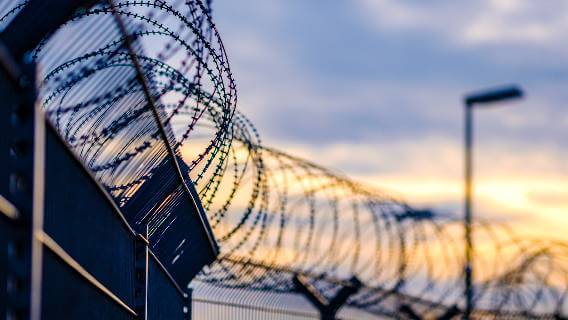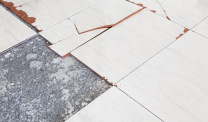Past Asbestos Testing on Inmates Could Affect J&J Talc Lawsuits
Asbestos Exposure & BansWritten by Tim Povtak | Edited By Walter Pacheco

Johnson & Johnson funded a study more than 50 years ago at a Philadelphia prison that injected asbestos into a small number of inmates to measure the short-term reaction to the toxic mineral when mixed with talc.
Details of Johnson & Johnson’s involvement in that study were unsealed for the first time at a trial in 2021, illustrating the company’s long-ago concern over potential problems with asbestos-contaminated talc in several of its products.
Bloomberg News first reported the story earlier this month. Legal experts believe the recently uncovered documents could potentially be powerful evidence in future cases against J&J.
Johnson & Johnson is the world’s largest health care company. It has been defending itself in court since 2013 from plaintiffs alleging that its talc products have caused cancer, including mesothelioma, primarily because of the asbestos contamination.
The asbestos study was done by University of Pennsylvania dermatologist Albert Kligman, who conducted dozens of similar experiments for almost two decades at the Holmesburg Prison in Philadelphia.
J&J Had Asbestos Concerns Long Ago
Although the inmate-based studies were documented many years ago in newspapers and books, J&J’s involvement in the talc and asbestos testing had never come to light. Earlier reports mentioned only the federal government and Dow Chemical as study sponsors.
Inmates were paid anywhere from $10 to $300 to participate. According to the recent report, Kligman recruited 10 inmates for the asbestos study. Each received an asbestos injection in his lower back, along with an injection of talc.
According to Kligman’s report to J&J, the short-term effect of the asbestos was on the inmates’ skin, causing granulomas, a clumping of cells due to inflammation. It was believed this was an indication of potential lung disease.
In the 2021 California trial in which jurors first heard about the Holmesburg study, a woman was awarded more than $26 million, much of it in punitive damages.
A spokeswoman for J&J told Bloomberg earlier this month that the company regrets its earlier involvement with Kligman and his studies, but said it was typical of research standards at the time.
“We deeply regret the conditions under which these studies were conducted, and in no way do they reflect the values or practices we employ today,” she said. “Our transparent, diligent approach to bioethics is at the heart of all we promise our customers and society.”
Kligman died in 2010. The University of Pennsylvania issued an official apology for his work in 2021 when the J&J involvement first became public.
J&J Moves Forward with Bankruptcy Plan
J&J has maintained that its talc products have never been contaminated by asbestos, which often is found near the Earth’s surface where talc is mined.
In the midst of more than 35,000 talc-related pending lawsuits, though, J&J stopped selling its iconic Johnson’s Baby Powder in the United States and Canada in 2020, citing a drop in interest among consumers.
Shortly after its involvement with the Holmesburg study was used in the California lawsuit, J&J moved forward with its controversial bankruptcy plan, hoping to split its liabilities from its assets. Jury verdicts and settlements already have cost J&J an estimated $3.5 billion.
Johnson & Johnson created an entity called LTL Management LLC, which immediately filed for bankruptcy protection and put all talc litigation on hold.
Based on that plan, which was approved by a federal judge in New Jersey last month, most of the lawsuits will be settled with LTL Management, which listed its worth at $10 billion along with $10 billion in liabilities.
J&J, one of America’s richest companies, has a market share of close to $450 billion. The company expects to save billions, forcing most of the lawsuits to work through the bankruptcy protection process.






